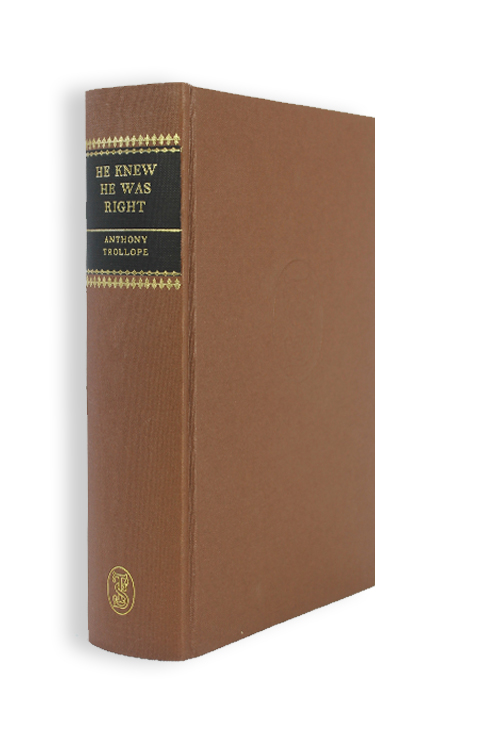He Knew He Was Right
The Trollope Society Edition Clearance Sale is only available in the UK.
Original price was: £35.00.£5.00Current price is: £5.00.
Clearance Sale UK only
Coupons are not valid with this offer
Available to members only
Introduction by Robertson Davies. Illustrations by Marcus Stone
832 pages
London, Strahan and Co., 1869. 2V.
James Pope Hennessy thought He Knew He Was Right ‘one of Trollope’s best but least-known novels’. It is also quite different in content from any of his other works. A sustained and effortless narrative tells of Louis Trevelyan, a wealthy young landowner who, visiting the Mandarin Islands, falls in love with the Governor’s daughter Emily Rowley. After marrying, the couple return to England with Emily’s sister Nora as a companion.
Prone to jealousy, Louis forbids his wife from entertaining Col. Frederic Osborne, an old friend of her father, who has something of a reputation in London for flirting with other men’s wives. Emily stubbornly refuses to obey on a matter of principle: that Louis is slandering her character by making such an order, and he becomes groundlessly but uncontrollably jealous, beginning to distrust everything his wife does. In despair at his constant irrational suspicion, and mindful of the health of their small son, Emily finally leaves Louis, which action precipitates his rapid mental decline. He kidnaps their son and flees to Italy where he has a complete breakdown. Emily is forced to act. Such is the main thrust of a genuinely tragic story – but it is in narrative and characterisation that Trollope rises to rare heights.
Louis Trevelyan’s transformation from dutiful husband to raving madman is subtly achieved over sixty chapters, yet a comparison of his portrayal in the opening chapters with that of the last would make one wonder if they truly are the same character, such is the deftness of the author’s touch. In Emily we see a stubborn Trollopian heroine, resisting her husband’s ever wilder charges whilst unflinchingly attempting to hold their marriage together.
Unusually for Trollope, He Knew He Was Right supports not one but two substantial sub-plots — the romance of Emily’s sister Nora with an old classmate of Louis’ called Hugh Stanbury; and the marvellously-drawn portrait of Hugh’s aunt, Jemima Stanbury, a wealthy spinster who is equally appalled at her nephew’s choice of a newspaper career and her niece’s choice of suitor.
